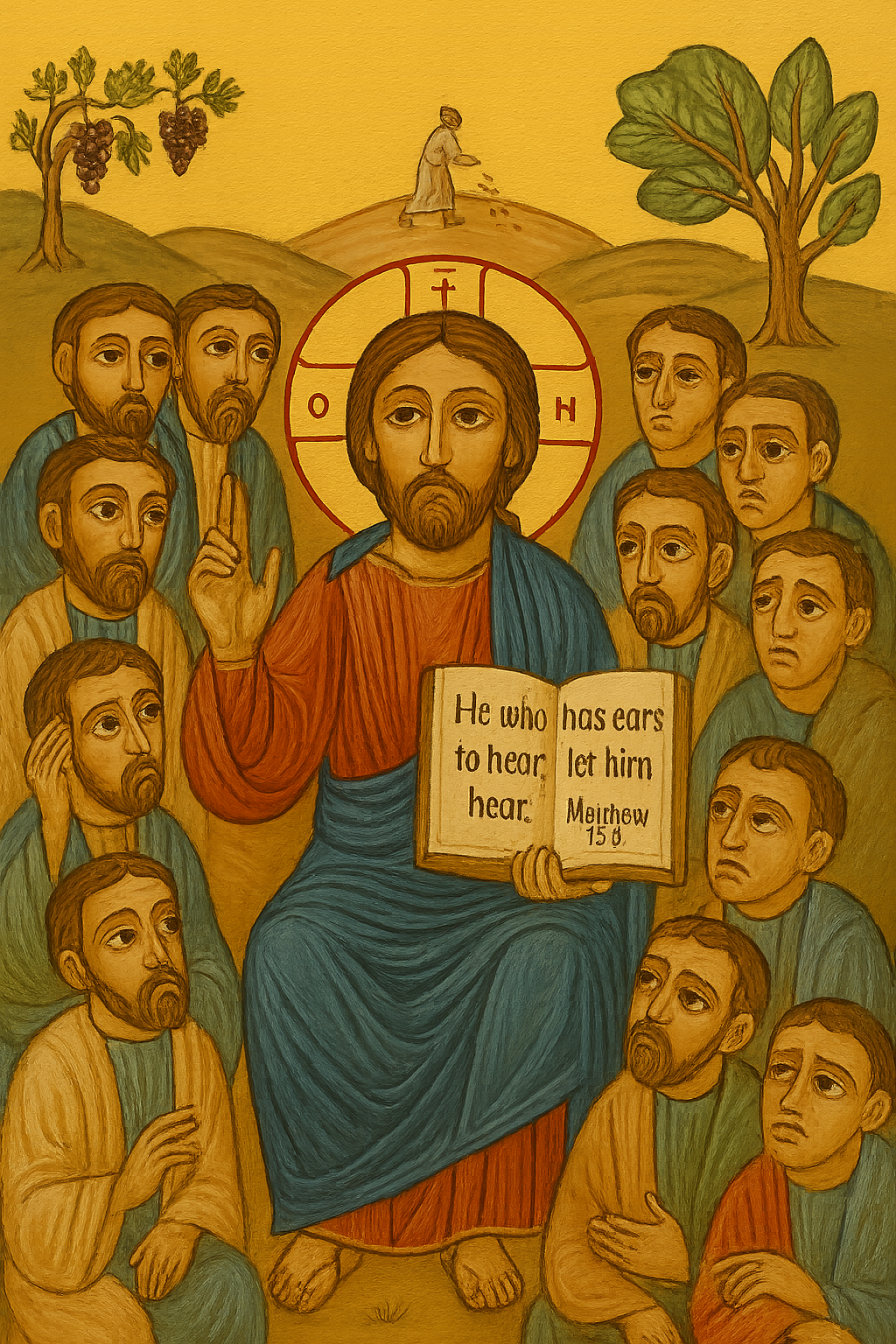What Are Parables?
In the Name of the Father, and the Son, and the Holy Spirit, One God. Amen. May the blessing of the Father who calls us and His Only Begotten Son Jesus Christ who saves us, and the Holy Spirit who sanctifies and transforms us be with us all, that we may hear His word and bear fruit—thirty, sixty, and a hundredfold. Amen.
Parables are earthly stories with heavenly meaning—images from daily life used to reveal mysteries of the Kingdom of God. The Greek word parabole means “to set side by side,” highlighting how Jesus uses familiar things to explain spiritual truths. They stir the heart and challenge the mind, much like a riddle that both hides and reveals.
St. John Chrysostom explains:
“Christ speaks in parables to draw the attentive and to hide the mystery from the unworthy.” (Homilies on Matthew, 45)
Why Did Jesus Teach in Parables?
The Lord’s parables were not just stories. They were sacramental teachings—simple on the outside but deep and transformative within. He used them as part of the divine “Economy,” revealing truth in proportion to people’s ability to receive it (cf. Mark 4:33).
As our Lord said:
“To you it has been given to know the mysteries of the kingdom of heaven, but to them it has not been given.” — Matthew 13:11 (NKJV)
In this way, the parables carry a double edge: they illuminate truth for the humble and sincere, while confounding the proud and closed-hearted. This echoes the prophetic tradition, especially Isaiah 6:9–10.
How Do We Interpret Parables?
There are two levels of exegesis:
- Critical (Historical) Interpretation: Understanding the meaning in its original context.
- Ecclesial (Mystical) Interpretation: Seeing its application to the Church, the soul, and Christ Himself.
Both are necessary. As St. Augustine says:
“Some elements in a parable serve the narrative only, but others carry the spiritual meaning.” (City of God, XVI.2)
And St. Gregory the Great affirms:
“Scripture grows with the one who reads it.” (Moral Homilies on Job, Preface)
The Fathers read the parables Christocentrically—seeing Christ, the Church, the believer, and judgment in each story. For example:
- The Good Samaritan = Christ healing fallen humanity.
- The Prodigal Son = the repentant soul returning to the Father.
- The Sower = the Word of God and the varied responses of hearts.
Why Are Parables Better Than Fables or Myths?
Unlike fables (which use animals or imaginary beings), Jesus’ parables are rooted in real life. They don’t personify inanimate objects nor delve into mythology. They reflect truth as lived, in the soil of human relationships, work, and ordinary life.
This mirrors the Hebrew way of thinking, which preferred realism and covenantal relationships over abstract metaphysics or poetic mythology.
How Should We Use Parables Today?
We are not to build dogmas solely on parables, but to understand them as spiritual illustrations of truths confirmed elsewhere in Scripture. They:
- Awaken reflection
- Encourage moral growth
- Reveal the nature of the Kingdom
- Show us the heart of God
They’re not just teaching tools, but spiritual mirrors. When we read the parables, we must ask:
Where am I in this story?
Am I the lost sheep, the good soil, the servant, or the Pharisee?
As the Lord says:
“He who has ears to hear, let him hear!” — Matthew 13:9 (NKJV)
The Parables and the Sacraments
Both are visible means revealing invisible grace. In every parable, there is something veiled and yet given—a truth we must receive not only with the mind but with the heart.
St. Cyril of Alexandria teaches:
“The Savior veils heavenly things in parables, not to hide, but to draw us closer through wonder and longing.” (Commentary on Luke)
Final Reflection
The beauty of the parables is that they are timeless and living. They were not just spoken to Galilean crowds, but are now spoken to us, the Church. Every generation will discover new light in them, if they seek Christ within them.
They are not abstract ideas but living seeds—and we must be the good soil. Let us listen deeply, pray the parables, and let them shape how we see God, others, and ourselves.
May the Lord bless us, transform our hearts and minds, that our homes may stand on the Rock, our hands serve in the harvest, and our hearts long for Heaven. Amen.

